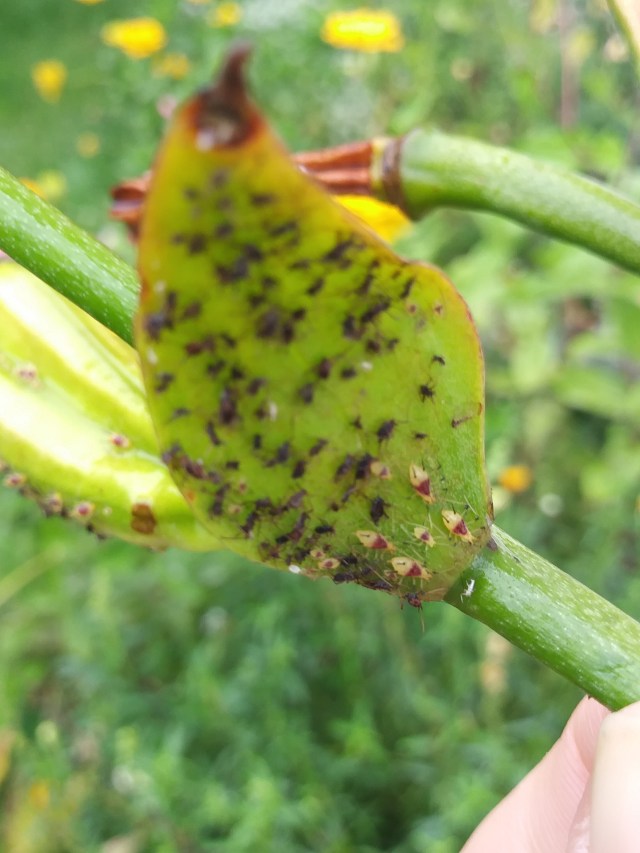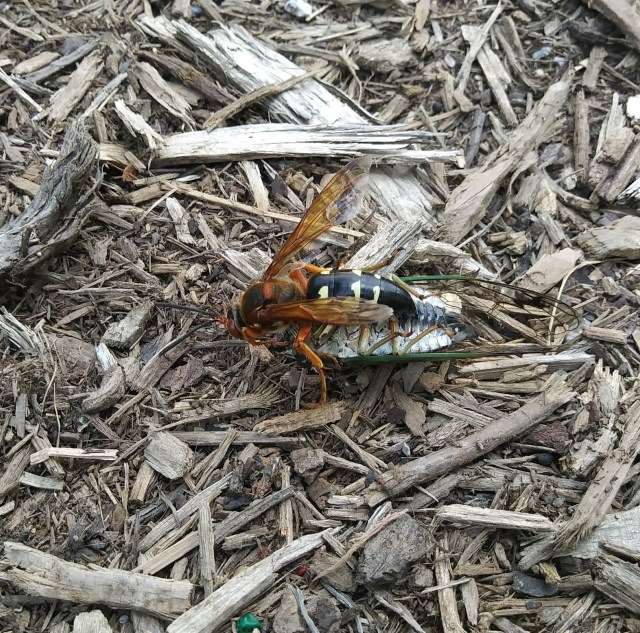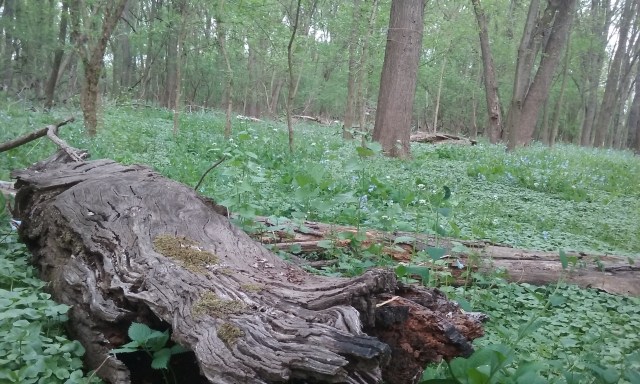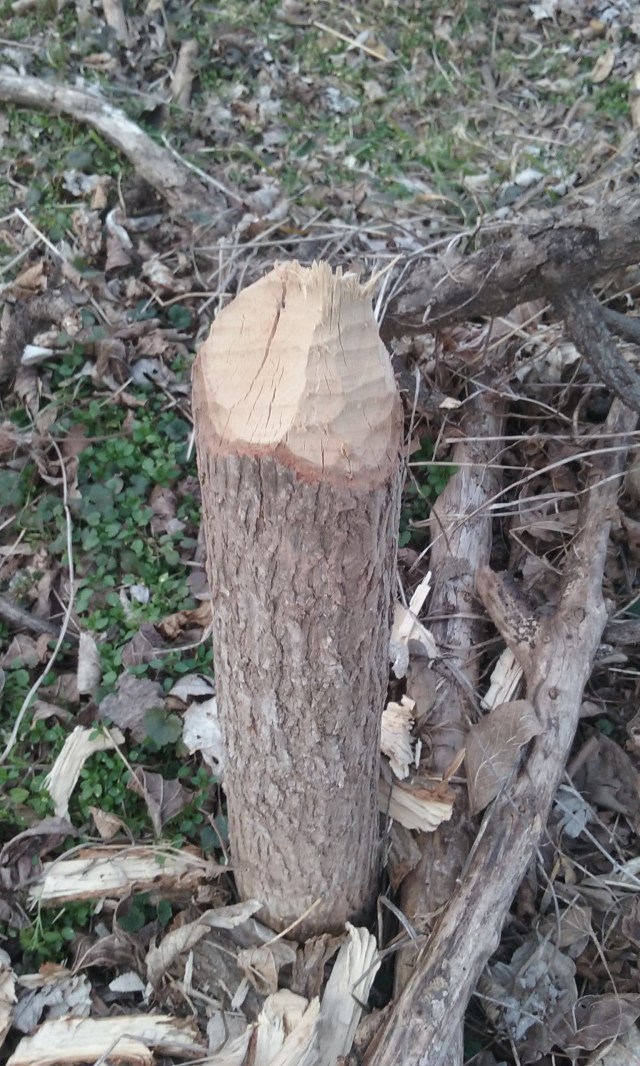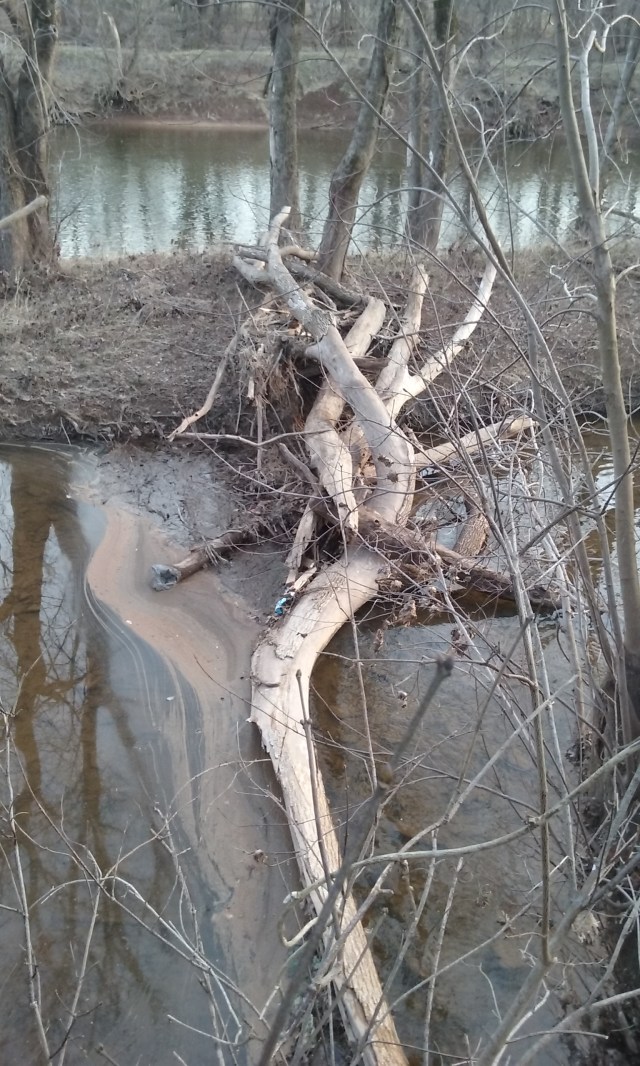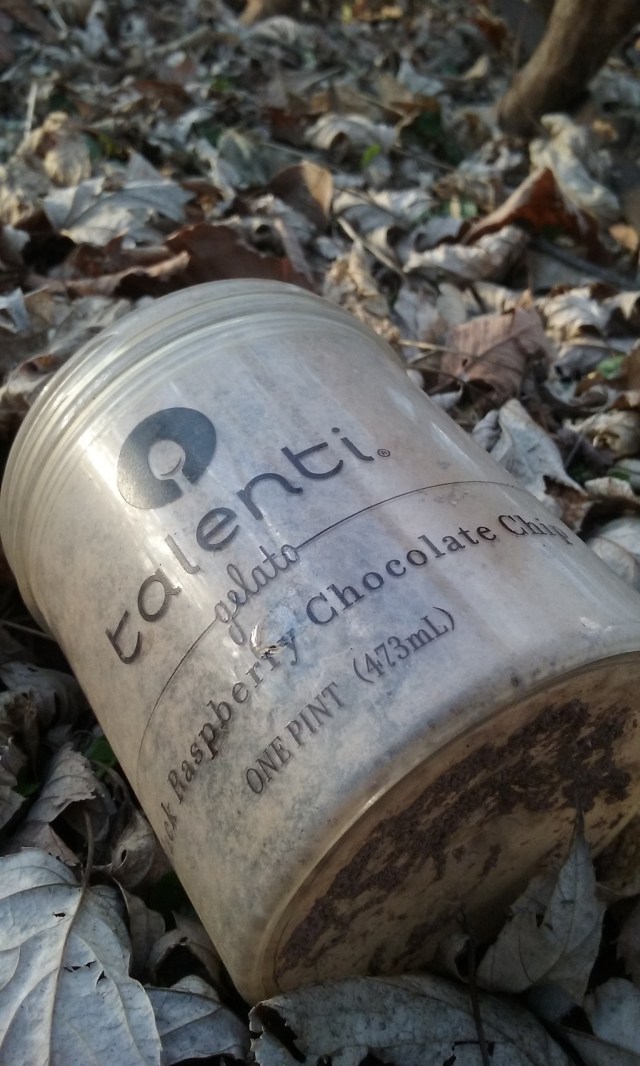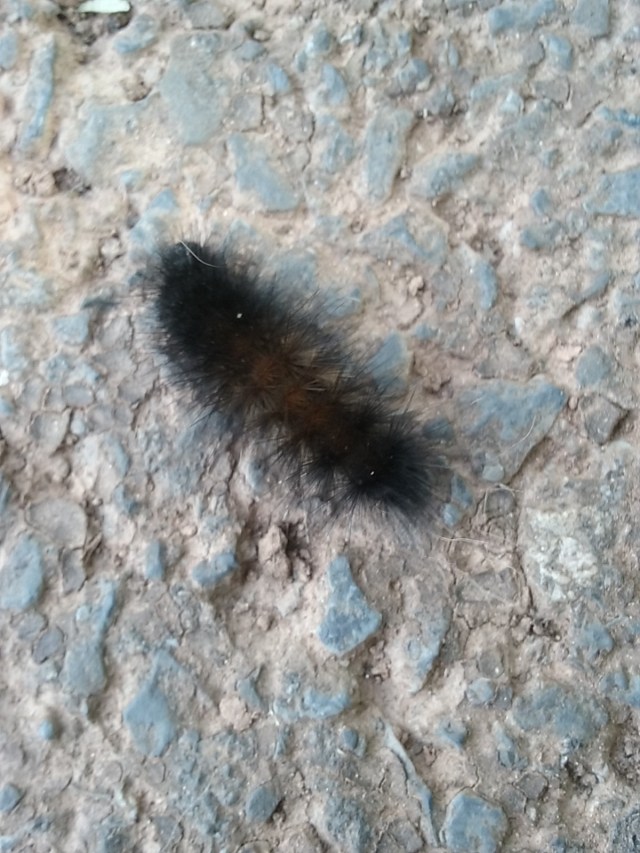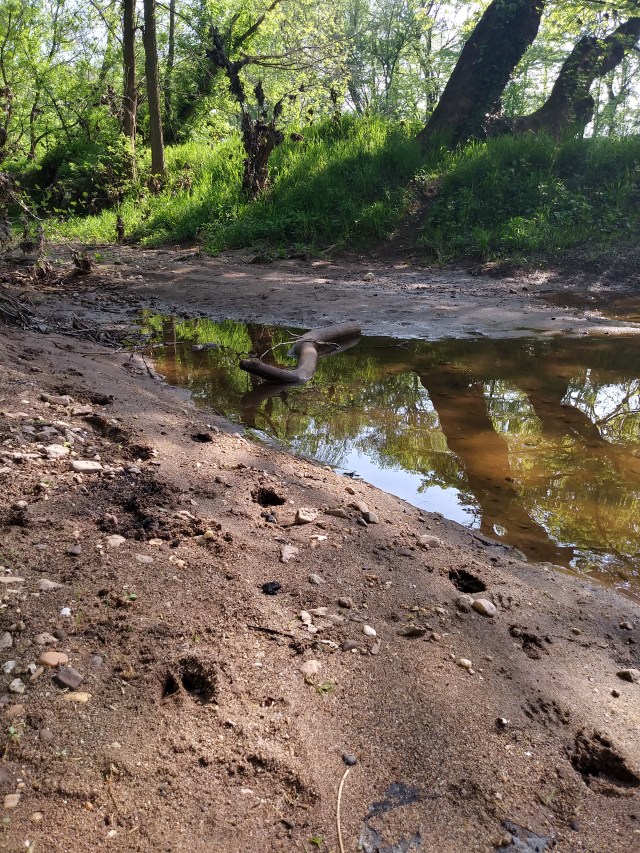
- 5 white-tailed deer, in 3 different locations
- 1 pileated woodpecker
- 1 groundhog
- 1 rabbit
- 5 squirrels (maybe more)
- 2 opossums
- 2 Canada geese
- 11 Mallard ducks (10 of them ducklings)
- 1 barred owl
- Too many songbirds to keep track of (mentally)
My walks lately are emotional affairs, vacillating between sublime wonder and heart-pressing sorrow in a matter of a few steps. I can’t help but feel pleasure in the unassuming beauty of the river, but the memories of earlier seasons, so easily evoked in a quiet mind, lay over it the blue tint of loss and grief. Especially as the days warm, I feel myself fighting against the passage of time, even as I smile at the new life it brings.
On the sunny days of this late, cold, wet spring the shores of the river glimmer in green, and elusive vernal ponds formed near its banks appear like secret oases beneath the trees. When I come upon them, I follow the deer paths to their edge and try to find frogs and turtles. Today I instead startled a mallard with her prodigious brood of ten ducklings, who skimmed across the water with astounding speed when they saw me step out of the woods. They’re clearly unrelated to the Frederick ducks of Baker Pond, who, despite the signs saying otherwise, see humans as a potential source of bread crumbs and other such duck junk food. I tried to take a picture of them, but, between the limitations of my camera phone and their determination to get away from me as quickly as possible, I got nothing but a photo of the pond.

I left them in peace, pursuing the main trail to the river, only to fluster a white-tailed deer, who paused mid-stride when she saw me walking up the path. I paused, then, too, to allow her to cross ahead of me, but she decided that this behavior was much too threatening on my part, and retreated back into the trees. Shrugging, I stepped off of the path in the opposite direction, following a switchback down toward the river, where a pair of Canada geese, after one look at me, launched into the water with agitated bickering and began paddling in indecisive circles.

Guessing that there was a nest nearby, I left the waterside and returned to the high trail. It was only a few minutes before I came upon another bird, whose large head and bright red crest immediately identified him as a pileated woodpecker. He was on the ground, throwing large chunks of dead wood off a log so soft with rot it hardly required pecking. It took him some time to notice me, but, even once he did, he only flew a few feet to another pile of wood, calling out a laughing song that always makes me feel as if I’m in a jungle. This time, as a pair of barred owls began hooting in the distance, the feeling was even stronger. But the peter-peter-peters of a tufted titmouse managed to keep me firmly in my mid-Atlantic reality.

Beyond this there was a part of the path that I hadn’t traveled since walking there with my father, last December, on one of the last days when such a walk was possible for him. It is a part of the path just beside my neighborhood with the easiest access to the Monocacy from the assisted living facility where my father lived the last 2 months of his life. While we were there, bundled against a gray day, I pointed out to him where Israel Creek flowed into the river and showed him the rocks where the boys liked to play, and we wondered a little about the birds we saw and the geology of this part of Maryland. He couldn’t always say what he meant, but he was himself, and I understood. It wasn’t long before we turned around, afraid that he wasn’t warm enough or strong enough to go much farther. I still imagined that we would come back again in the spring, when it was more pleasant and there would be more to see.
This morning, I feared walking on that path again. Not so much because I was afraid of what I might feel or remember but because I was afraid of treading over yet another place where my last memory was with him, alive. I suppose some part of me believed — or wanted to believe — that he could somehow remain alive right there forever, as long as I never wrote another memory over it.
But I walked on. It is spring. And I told him we would come back in the spring.
The curious thing is that just when I reached the part of the path where I had stopped to speak with my dad, the part of the path that would seem the hardest to pass, I ended up so distracted that I didn’t think of it at all until it was already behind me. Because, of all the curious things, out of the corner of my eye, partially obscured by a pile of tree limbs and twigs, I saw two white forms shuffling about. At first I thought they might be small dogs, and then maybe young pigs, but as I got a better look I realized that they were two full-grown opossums, out in the morning sun. They’re not terribly quick things, so they thought a little before rambling off back down the hill into the woods, away from me. I was honestly tickled because I hadn’t seen a live adult possum in the wild since a family vacation years ago. And I had never seen one in daylight. And here were two! My father would have loved it.
I loved it.












